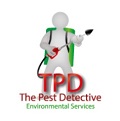Pest Control - Moles
Categories
SIGNS OF RODENTS
WHAT TO LOOK FOR
Mole Control

How To Identify A Mole
Appearance
The general characteristics of the mole, and more specifically the eastern mole, are a pointed snout, very large and rounded front feet with stout claws, and a short, bare tail. They grow to approximately 17.6 cm long with short, velvety fur which is grayish in color. Because of their subterranean lifestyle, eyes and ears are small and somewhat concealed by fur.
Behavior, Diet & Habits
Moles feed primarily on earthworms, ants, beetle grubs and other arthropods living in the ground. A small portion of their diet does consist of various seed and vegetable matter, but they are not known to eat bulbs or roots of gardening plants.
Reproduction
Females produce three to five young in the spring.
Signs of a Mole Infestation
As those who have experienced moles first-hand know, these pests cause havoc with their burrowing. Moles are active throughout the year. They create elaborate underground tunnels called runways which run at shallow and deep levels. The subsurface runways are where mounds and ridges show above ground. These are typically used for feeding and can be produced at a rate of 6 meters per hour. The deep runways are located up to 25 cm below the surface. These are main thoroughfares for the mole as it travels to and from the surface. The number of mounds or surface ridges is no indication of the number of moles within a specific plot of land. Typically, one hectare of land will support seven to 12 moles at one time. If the property is adjacent to fields or forested land, more moles may be present and crossing your property.
What Pest Detective Does
We have extensive Mole catching experience so once we have conducted a site survey, we can assess the level of infestation for you and begin the Mole eradication process.
Mole Control

How To Identify A Mole
Appearance
The general characteristics of the mole, and more specifically the eastern mole, are a pointed snout, very large and rounded front feet with stout claws, and a short, bare tail. They grow to approximately 17.6 cm long with short, velvety fur which is grayish in color. Because of their subterranean lifestyle, eyes and ears are small and somewhat concealed by fur.
Behavior, Diet & Habits
Moles feed primarily on earthworms, ants, beetle grubs and other arthropods living in the ground. A small portion of their diet does consist of various seed and vegetable matter, but they are not known to eat bulbs or roots of gardening plants.
Reproduction
Females produce three to five young in the spring.
Signs of a Mole Infestation
As those who have experienced moles first-hand know, these pests cause havoc with their burrowing. Moles are active throughout the year. They create elaborate underground tunnels called runways which run at shallow and deep levels. The subsurface runways are where mounds and ridges show above ground. These are typically used for feeding and can be produced at a rate of 6 meters per hour. The deep runways are located up to 25 cm below the surface. These are main thoroughfares for the mole as it travels to and from the surface. The number of mounds or surface ridges is no indication of the number of moles within a specific plot of land. Typically, one hectare of land will support seven to 12 moles at one time. If the property is adjacent to fields or forested land, more moles may be present and crossing your property.
What Pest Detective Does
We have extensive Mole catching experience so once we have conducted a site survey, we can assess the level of infestation for you and begin the Mole eradication process.
SIGNS OF RODENTS
WHAT TO LOOK FOR
Pest Detective Discounts
Armed Forces Discount

Pensioner Discount

Categories
Have Any Question!
DON'T HESITATE TO CONTACT US ANY TIME.
Have Questions ?
Call us now
Head Office: 01202 042814
About Pest Detective
We specialize in 23 different kinds of pest, and we're also qualified to handle a much wider range of pest control needs. If you have a pest problem that's not covered in our pest library, be sure to contact us for information about what services we offer for your particular needs.
We are open
on Call
24 hours - 7 days a week
Services
Need support?
Drop us an email
Contact us
Locations
- The Pest Detective - 01202 042814
- Pest Detective Poole - 01202 042814
- Pest Detective Bournemouth - 01202 042814
- Pest Detective Blandford - 01258 395021
- Pest Detective Ringwood - 01425 896029
- Pest Detective Wareham – 01929 498149
- Pest Detective Dorset - 01305 360649
- Pest Detective Dorchester - 01305 360649
PEST DETECTIVE SOCIAL
PEST DETECTIVE SOCIAL
PEST DETECTIVE COVERAGE
Poole: Branksome, Broadstone, Canford Cliffs, Sandbanks,, Charminster, ,Hamworthy, Oakdale, Upton, Westborne, Canford Heath, Parkstone, Penhill, Lytchett Minster, West Parley, West Moors, and Wimborne.
Bournemouth: Ashley Heath, Boscombe, Charminster, Moordown, Kinson, Kings Park, Queens Park, Winton, Ferndown , Southbourne, Meyrick Park, Pokestown, Mudeford ,Verwood, West Parley, West Moors and Highcliffe.
Blandford: Child Oakford, Milton Abbas, Sturminster Marshall, Sturminster Newton, Hazelbury Bryan, Marnhull, Tarrent Hinton, Milborne St Andrew, Witchampton and Wimborne.
Wareham & Swanage: Purbecks, Bere Regis, Bindon Abbey, Corfe castle, Worth Matravers, Moredon and Wool.
Ringwood: West Hampshire, Bransgore, Burley, Fordingbridge, Highcliffe and New Milton.
Dorset: Poole, Bournemouth, Christchurch, Wareham, Swanage, Purbecks, Wimborne, Blandford, Ringwood, Dorchester and Weymouth..
Dorchester & Weymouth: Abbotsbury, Puddletown, Upwey, Portland and Warmwell.
© 2016 The Pest Detective - All Rights Reserved | Site Map | Terms & Conditions | Privacy Policy

